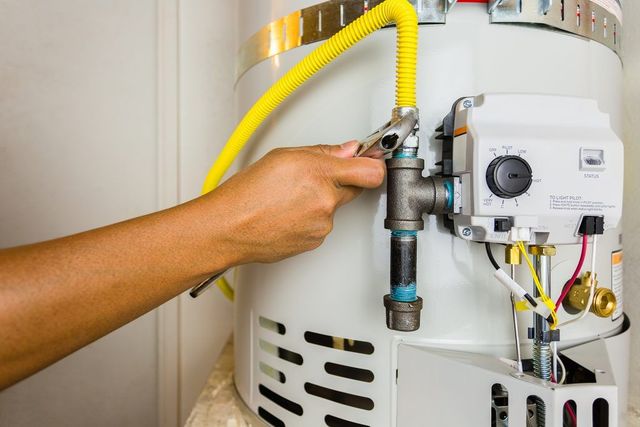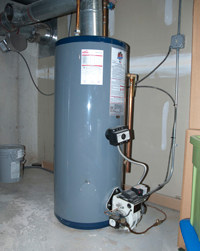Do you find yourself looking for suggestions around How to Maintain a Hot Water Heater in a Few Simple Steps?

Warm water is essential for everyday convenience, whether it's for a refreshing shower or washing dishes. To guarantee your hot water system runs successfully and lasts longer, normal maintenance is crucial. This post provides functional tips and insights on just how to keep your home's hot water system to prevent disturbances and costly repair work.
Introduction
Preserving your home's hot water system may seem challenging, however with a few easy steps, you can ensure it operates smoothly for many years to find. This overview covers every little thing from recognizing your warm water system to DIY maintenance suggestions and knowing when to contact specialist assistance.
Significance of Keeping Your Warm Water System
Normal maintenance not only prolongs the life expectancy of your warm water system yet also ensures it operates effectively. Ignoring upkeep can result in decreased performance, greater power costs, and also premature failure of the system.
Signs Your Hot Water System Needs Maintenance
Understanding when your hot water system needs interest can stop significant concerns. Watch out for indications such as irregular water temperature, strange noises from the heater, or rusty water.
Understanding Your Hot Water System
Before diving right into upkeep tasks, it's valuable to understand the standard parts of your warm water system. Commonly, this consists of the hot water heater itself, pipelines, anode poles, and temperature level controls.
Monthly Upkeep Tasks
Normal regular monthly checks can aid catch small concerns prior to they intensify.
Purging the Water Heater
Flushing your water heater gets rid of debris build-up, enhancing performance and lengthening its life.
Monitoring and Replacing Anode Rods
Anode rods prevent corrosion inside the container. Evaluating and replacing them when worn out is crucial.
Evaluating and Readjusting Temperature Settings
Adjusting the temperature settings ensures optimum efficiency and safety and security.
Do It Yourself Tips for Maintenance
You can perform numerous upkeep tasks yourself to maintain your warm water system in top problem.
Looking for Leaks
Routinely inspect pipes and connections for leakages, as these can result in water damage and higher expenses.
Testing Stress Relief Valves
Testing the stress relief valve ensures it functions appropriately and stops excessive stress accumulation.
Insulating Pipes
Shielding warm water pipes lowers warmth loss and can save energy.
When to Call an Expert
While DIY upkeep is useful, some issues need professional experience.
Complicated Issues Needing Professional Assistance
Instances include significant leakages, electric issues, or if your water heater is regularly underperforming.
Routine Professional Maintenance Benefits
Professional upkeep can include thorough assessments, tune-ups, and ensuring conformity with safety and security requirements.
Final thought
Normal maintenance of your home's warm water system is important for performance, longevity, and price savings. By complying with these pointers and knowing when to look for specialist aid, you can guarantee a trusted supply of warm water without unexpected interruptions.
Water Heater Maintenance Tips
Test the TPR Valve
Shut off the power and the cold-water supply valve. Place a bucket under the pipe connected to the temperature-pressure-release (TPR) valve on the top or side of the tank. (This valve opens if the tank pressure gets too high.) Lift the valve’s tab to let some water out, then let go. If water keeps flowing, drain the tank partway, unscrew the old valve with a pipe wrench, and install a new one. Check the Anode Rod
Put a hose to the tank’s drain cock and let out a few gallons of water. Now fit a 1 1/16-inch socket onto the rod’s hex head on top of the heater (or under its top plate) and unscrew the rod. If it’s less than ½ inch thick or coated with calcium, buy a new one, wrap its threads with Teflon tape, put it back in the tank, and tighten securely. Use this segmented rod if headroom above the tank is limited. Drain the Tank and Wash Out Sediment
Drain the remaining water in the tank into the bucket, then stir up the sediment on the tank’s bottom by briefly opening the cold-water supply valve. Drain and repeat until clean water comes out of the hose. Close the drain cock, refill the tank, and turn its power back on. Adjust the Temperature
Find the temperature dial on the side of the tank and unscrew its cover. Adjust the dial to 120 degrees using a flathead screwdriver. For every 10 degrees the temperature is lowered, you can expect to save up to 5 percent in energy costs. Turn the water heater off or the thermostat down to its lowest setting if you plan to be away from home for more than three days. Insulate the Pipes
Buy some self-sticking 3/8-inch-thick foam pipe insulation that matches the pipes’ diameter. Slide the foam over the hot-and cold-water pipes as far as you can reach. Insulating the cold-water pipe prevents condensation in summer. Peel the tape and squeeze the insulation closed. If the pipe is 6 inches or less from the flue, cover it with 1-inch-thick unfaced fiberglass pipe wrap. https://www.thisoldhouse.com/plumbing/21016402/how-to-maintain-a-water-heater

Hopefully you liked our topic about How to Maintain a Hot Water Heater in a Few Simple Steps. Thank you so much for spending some time to read our article. Sharing is good. Helping people is fun. Thank you for your time. Kindly check our blog back soon.
Call Today